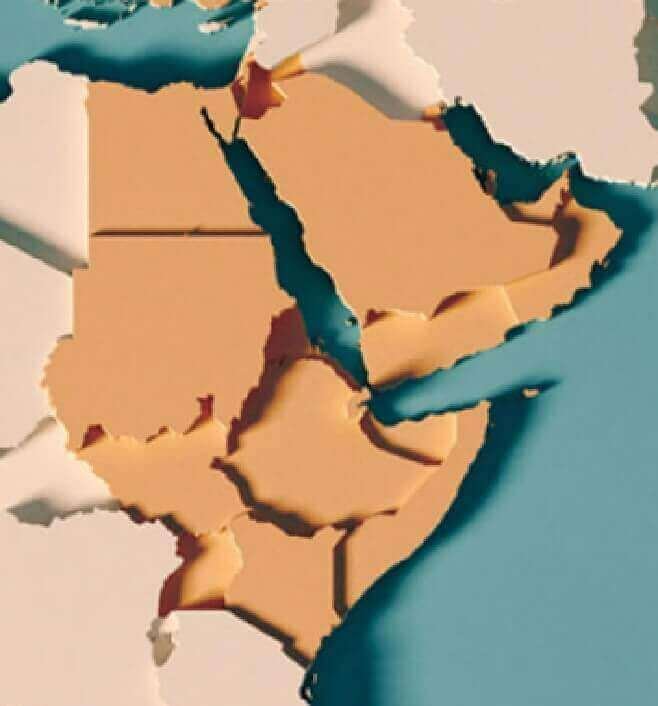By Dr. Suleiman Walhad
September 23rd, 2023

We have discussed the Horn of Africa States region for quite some time now. It is perhaps time for the region to think deeper and define why it needs to have a new kind of relationship within itself and with others. The region should be developing a new kind of relationship among its member states, which have been at loggerheads for all the past hundred-some years, a quarrelsome relationship that distances the traditional cooperation between the highland and lowland cooperation, which existed for millennia. It is why we propose a new but not really new relationship among the SEED countries to be named the Highland/Lowland Cooperation Initiative (“HLCI”) and based on the region’s traditional philosophies on relations among its peoples and their relationships with others.
HLCI should promote and make the development of the region a central issue, building road and rail connections and ports for the region. Building a sophisticated infrastructure for the region would not only create physical connections among the four countries but would also enable the movement of both people and goods among them, enhancing easier exports of the region’s agricultural, mineral, livestock, and marine wealth to the rest of the world. This would also enable service development in the region in the form of connected telecommunications, education, health services, tourism, and financial services.
The HLCI would enable the region to exploit its traditional philosophies of management and more particularly people management, which has kept the region as unique as it is throughout history, where it had close relations with southern Europe, West Asia, and South Asia and the rest of Africa, especially east and central Africa. The relations should be based on self-reliance, holding hands together, and cooperating.
The approach of collective bargaining and working together would help create new relations with the other or non-regional parties, which does not necessarily mean antagonistic but a new way of dealing with them constructively for the development of the region, based on mutual interests.
The HLCI would not limit itself to physical connections but would also address the new developments on earth such as climatic changes and environmental degradation, which had and still continue to have serious effects on the region and its survival conditions. Rebuilding a more liveable environment for both people and animals in the region would be one of the key issues of the region.
HLCI would revive the usage of traditional corridors of the region and build new ones that not only serve the region but also allow connections to the hinterlands of Africa and other parts of the world such as Asia, Europe, and even the Americas.
The HLCI would also contribute to helping instill peace and security in the region, which appears to have been missing over the past hundred-some years. The unnecessary tribe/clan competition would be replaced by competition over abilities, skills, knowledge, expertise, and what one can contribute to any particular task on the table. The tribe/clan element should no longer be a determinant factor of who does what in the region. We know the region has no shortage of skills and knowledge, which should be channeled correctly, as opposed to the recent past where trust has just gone back to the animal instinct of the tribe and clan.
The HLCI would take advantage of the geostrategic location of the region and its connections with the rest of the world. It indeed lies halfway between East Asia and Europe and is on the eastern border of the African continent, hence posed to connect the continent and its huge wealth to Asia as well as Europe through the Red Sea, the Suez Canal, and the vast Indian Ocean.
The region can become a major logistics hub, a region where its wealth and those of Africa can be supplied with ease to the rest of the world in connection with the various other global initiatives by other regions and countries of the world such as the BRI of China or the IMEC of India and others that may come to the fore in the future.
A major stumbling block of such an initiative would be the funding and financing of such an immense project. However, one should note that there are, indeed, no impossibilities for all reasonable and good-intentioned projects. An enabling factor of such a project would have first to be a closer relationship among the countries of the region. Without such a closer relationship among the countries, no project of any size or meaning would take place IN THE REGION.
Once such a relationship is forged, the process of working out mechanisms for financing and raising funds will be easier. We should always use the GERD financing as a prime example of what the region can do. A collective approach of the region’s population and countries would be an immense source of funding for anything, provided there is a will. There will always be a way for funding and financing.
The HLCI will require a peaceful and secure environment, and this is, in the main, in the hands of the people and governments of the region. Others would always be working to disrupt development of any sort in this region and the people would have to be diligent in protecting their turf as others do for theirs.
